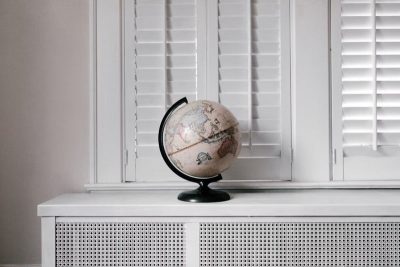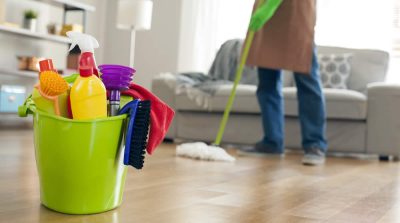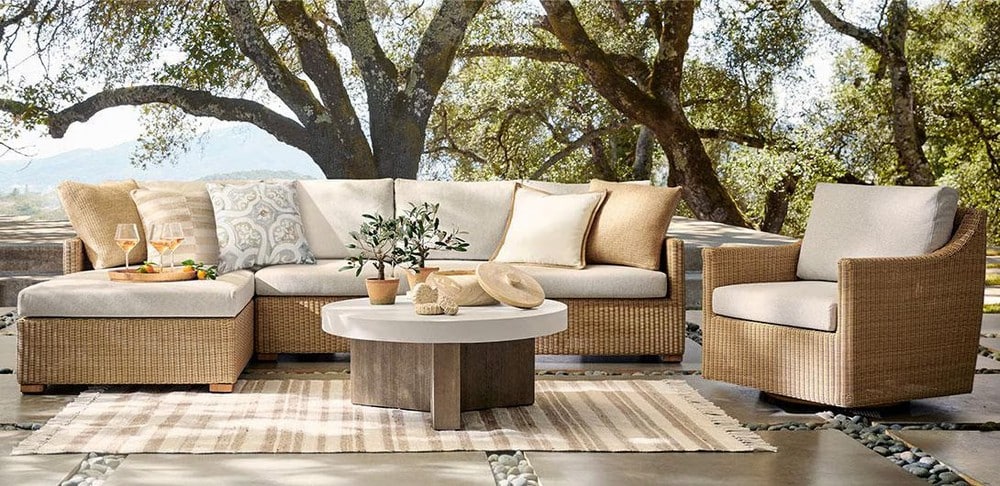
Table of Contents
- Introduction
- Cleaning and Maintaining Metal Furniture
- Cleaning and Maintaining Wooden Furniture
- Cleaning and Maintaining Wicker and Rattan Furniture
- Cleaning and Maintaining Plastic, Resin, or PVC Furniture
- Caring for Outdoor Cushions and Upholstery
- Periodic Maintenance of Outdoor Furniture
- Conclusion
Introduction
The Importance of Maintaining Outdoor Furniture
Outdoor furniture is designed to withstand various weather conditions, from rain and humidity to intense sunlight. However, even the most durable materials require regular maintenance to stay in top condition. Proper care is essential because outdoor furniture is constantly exposed to the elements, which can cause wear and tear over time. Without routine cleaning and protection, materials like wood, metal, and plastic can degrade, leading to corrosion, fading, cracking, and, eventually, the need for replacement.
Maintaining outdoor furniture isn’t just about aesthetics—it also ensures the functionality and comfort of your outdoor space. For instance, rust on metal furniture can weaken its structure, while mold and mildew on cushions can lead to unpleasant odors and health hazards. By dedicating time to regular upkeep, you can prevent damage, keep your outdoor area looking inviting, and avoid costly repairs or replacements in the long run.
The Benefits of Regular Cleaning for Prolonging Furniture Lifespan
Regular cleaning is the most effective way to extend the life of your outdoor furniture. Dust, dirt, and moisture can accumulate on surfaces, especially in crevices, leading to long-term damage if left unchecked. For example, untreated wood can absorb moisture, causing it to warp or rot, while metal can develop rust when exposed to rain without proper care.
By cleaning furniture frequently, you not only remove these damaging agents but also maintain the structural integrity and appearance of the pieces. Moreover, regular cleaning allows you to spot early signs of deterioration, such as small cracks in wood or the first signs of rust on metal, allowing for timely interventions. With a consistent cleaning routine and protective measures like applying sealants, oils, or waxes, your outdoor furniture can remain functional and beautiful for years to come.
Cleaning and Maintaining Metal Furniture
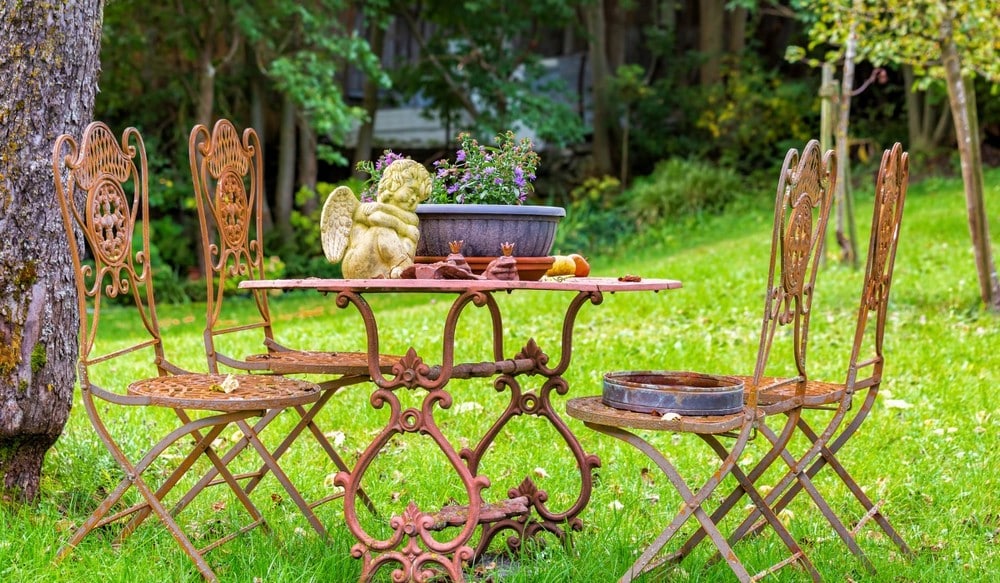
Cleaning Solutions and Recommended Tools
When it comes to metal furniture, a gentle but effective cleaning routine is essential to avoid damaging the material while removing dirt, dust, and grime. The following solutions and tools are recommended for safe cleaning:
- Cleaning Solutions: A mixture of warm water and mild dish soap is ideal for metal surfaces. It effectively removes dirt without being too harsh on the protective coating. For tougher stains, you can add a bit of baking soda to the soapy water or use a specialized metal cleaner. Always test cleaning products on a small, inconspicuous area before applying them to the entire surface.
- Tools: Use a soft sponge or microfiber cloth to wipe down metal furniture. Avoid abrasive brushes or pads, which can scratch the metal surface. For intricate areas or joints, a soft-bristled toothbrush can be helpful in removing dirt. After cleaning, be sure to rinse thoroughly with clean water to prevent any soap residue from causing spots. Always dry the furniture with a soft cloth to avoid water marks or rust formation on vulnerable areas.
Methods to Prevent Rust and Corrosion
Metal furniture is prone to rust and corrosion, especially if it is left exposed to rain, humidity, and salty air near coastal areas. Preventing rust and corrosion requires a combination of good cleaning habits and protective measures:
- Rust Prevention: Regularly inspect your metal furniture for small signs of rust, especially around joints and welded areas. If you notice rust forming, gently sand it off with fine-grit sandpaper and treat the area with a rust inhibitor or touch-up paint designed for metal. For additional protection, applying a thin coat of car wax or specialized metal sealant can act as a barrier between the metal and moisture.
- Corrosion Prevention: In addition to rust, metal furniture can corrode when exposed to salty air or acidic conditions. You can reduce the risk by applying a clear lacquer or protective coating to the surface of the metal. These treatments create a layer that shields the metal from the corrosive elements in the environment.
Storage and Protection Against Weather
Proper storage is crucial for extending the life of metal furniture, especially during periods of harsh weather, such as winter or rainy seasons.
- Weather Protection: During periods of rain or snow, covering your metal furniture with waterproof covers can significantly reduce exposure to moisture. Look for covers made from breathable materials to prevent condensation buildup, which can also lead to rust.
- Indoor Storage: If possible, store metal furniture indoors or in a shed during the off-season. If moving the furniture indoors is not an option, elevate it on wooden blocks or place it on a covered patio to prevent direct contact with the damp ground.
Periodic Maintenance
Metal furniture benefits from periodic maintenance to keep it in top condition and prevent long-term damage:
- Seasonal Cleaning: At least twice a year, give your metal furniture a thorough cleaning—once at the beginning of spring and again before winter storage. This ensures that dirt, dust, and moisture do not accumulate and cause corrosion.
- Reapplying Protective Coatings: Every 1-2 years, reapply wax, sealant, or a rust-resistant paint to maintain the protective barrier. Always follow the manufacturer’s guidelines for the specific type of metal, whether it is aluminum, wrought iron, or steel.
- Regular Inspections: Periodically check your furniture for signs of rust or wear. Early detection and treatment can prevent small rust spots from spreading and causing more serious damage to the structure of the furniture.
By following these cleaning and maintenance steps, you can preserve the appearance and functionality of your metal furniture for many years.
Cleaning and Maintaining Wooden Furniture

Gentle Solutions for Cleaning Wood
Wooden outdoor furniture, whether made from teak, eucalyptus, cedar, or other hardwoods, requires gentle yet effective cleaning to remove dirt and grime while preserving its natural finish. Over time, exposure to the elements can cause wood to look dull or become stained. Here’s how to safely clean wooden furniture:
- Cleaning Solutions: A simple mixture of warm water and a few drops of mild dish soap works well for regular cleaning. Use a soft cloth or a sponge to apply the solution to the surface, being careful not to saturate the wood with water. If you want to use a commercial wood cleaner, ensure it is specifically formulated for outdoor furniture to avoid stripping the wood’s natural oils.
- Cleaning Tools: Avoid using abrasive sponges or stiff brushes, as these can scratch the wood. A soft-bristle brush or microfiber cloth is ideal for scrubbing dirt off without damaging the finish. Always rinse the furniture with clean water after washing to remove any soap residue and dry it with a soft, lint-free cloth to prevent water spots or moisture absorption.
Removing Mold and Water Stains
Mold, mildew, and water stains are common problems for wooden furniture, especially in humid or damp conditions. Left untreated, these can penetrate the wood, causing long-term damage.
- Mold and Mildew: To remove mold and mildew, mix one gallon of warm water with a cup of white vinegar and a few drops of dish soap. Scrub the affected areas with a soft brush, ensuring you reach into any grooves or cracks. Vinegar is a natural antifungal agent that helps eliminate mold without harming the wood. For more stubborn mildew, you can use a solution containing oxygen bleach (but avoid chlorine bleach, which can damage the wood).
- Water Stains: Water stains often appear as white spots on wooden furniture. To remove these, gently rub the area with a mixture of equal parts baking soda and water or use a commercial stain remover designed for wood. For deeper stains, sanding the affected area with fine-grit sandpaper may be necessary, followed by reapplication of oil or sealant.
Oil and Varnish Treatment for Protection
Applying protective treatments such as oils or varnishes is crucial for maintaining the beauty and durability of wooden furniture. These treatments help the wood resist moisture, prevent cracking, and maintain its natural color.
- Oil Treatment: Teak oil or linseed oil is commonly used to nourish and protect outdoor wooden furniture. These oils penetrate the wood, replenishing natural oils lost due to exposure to the sun and rain. Apply oil to clean, dry wood using a soft cloth, working with the grain of the wood. Let the oil soak in for a few hours, then wipe off any excess. Reapply the oil every 6-12 months, depending on the weather conditions and the type of wood.
- Varnish or Sealant: A clear varnish or wood sealant can be applied to provide a protective layer against UV rays, moisture, and dirt. Sealants often contain UV blockers, which help to prevent the wood from fading under intense sunlight. Apply the varnish in thin layers, following the manufacturer’s instructions, and allow it to dry thoroughly between coats. This process can be done every 1-2 years to maintain the wood’s protective barrier.
Preventing Sun Fading
Prolonged exposure to the sun can cause wood to fade and lose its natural color, turning into a silvery-gray patina. While some people prefer this weathered look, you can take steps to prevent sun damage and retain the wood’s original hue.
- UV Protection: Applying a UV-protective oil or varnish helps prevent the wood from bleaching in the sun. These treatments block harmful UV rays and slow down the natural fading process. Some outdoor wood finishes contain pigments that enhance the natural color of the wood while providing sun protection.
- Shade and Covers: When not in use, keep wooden furniture in a shaded area or use furniture covers. This minimizes direct exposure to sunlight and protects the wood from weathering. If possible, rotate the position of your furniture throughout the season to ensure even exposure to sunlight and prevent uneven fading.
Proper Storage
Proper storage of wooden furniture during the off-season is essential for prolonging its lifespan. Unprotected, wooden furniture can warp, crack, or degrade in harsh winter conditions.
- Indoor Storage: The best way to protect wooden furniture is to store it indoors during the winter or when heavy rain and snow are expected. A dry, well-ventilated area like a garage or shed is ideal. If bringing the furniture indoors is not an option, place it under a covered patio or gazebo to shield it from direct exposure to the elements.
- Outdoor Storage: If the furniture must stay outside, use weatherproof covers that fit snugly over the pieces. Look for covers made from breathable materials that allow airflow, preventing moisture buildup, which could lead to mold or mildew. Ensure the furniture is raised slightly off the ground to avoid direct contact with wet surfaces, which can accelerate decay.
By following these guidelines, you can maintain the natural beauty of your wooden outdoor furniture and protect it from the elements, ensuring that it remains a long-lasting feature of your outdoor space.
Cleaning and Maintaining Wicker and Rattan Furniture
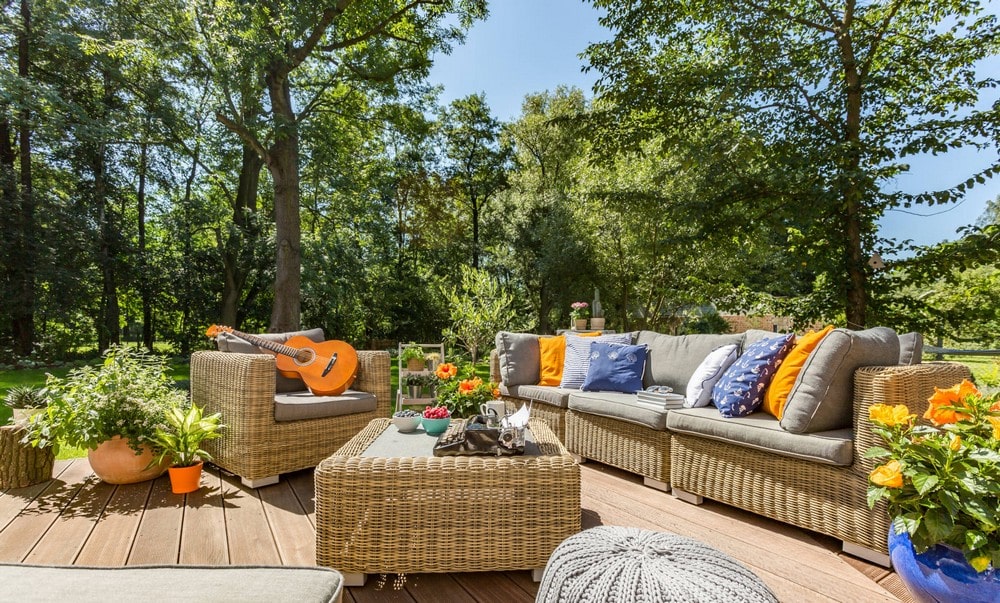
Cleaning Methods for Natural and Synthetic Rattan
Rattan furniture, whether natural or synthetic, adds a beautiful, rustic touch to outdoor spaces. However, it requires gentle and proper cleaning to avoid damage, especially since natural rattan is more delicate compared to its synthetic counterpart.
- Natural Rattan: To clean natural rattan, start by using a vacuum cleaner with a brush attachment or a soft-bristled brush to remove dirt and debris from the crevices. For deeper cleaning, prepare a solution of warm water and mild dish soap. Dip a soft cloth into the soapy solution, wring it out well, and gently wipe the furniture. Avoid soaking the rattan, as too much moisture can weaken the natural fibers and lead to mold growth. Once cleaned, wipe the surface with a dry cloth and let it air dry completely in a shaded area.
- Synthetic Rattan: Synthetic rattan, also known as resin wicker, is more resilient and easier to clean. You can hose it down with water for a quick clean, using a mild soap and water mixture to scrub off dirt and grime. A soft brush works well for scrubbing hard-to-reach areas. Since synthetic rattan is more water-resistant than natural rattan, you can rinse it thoroughly without worrying about damaging the material.
Protection Against Sun and Moisture
Both natural and synthetic rattan are susceptible to damage from prolonged exposure to direct sunlight and moisture. Taking preventive measures will help preserve the furniture’s condition and appearance.
- Sun Protection: Constant exposure to UV rays can cause natural rattan to dry out, crack, or fade. To protect it from sun damage, place the furniture in a shaded area or under an umbrella when not in use. For synthetic rattan, UV exposure can cause fading, so consider applying a UV protectant spray to maintain its color and longevity.
- Moisture Protection: Natural rattan is particularly sensitive to moisture, which can lead to mold, mildew, and rotting. It’s essential to keep it dry, especially after cleaning or rainy weather. Always ensure that natural rattan is stored in a dry, covered space or use waterproof covers when left outdoors. Synthetic rattan, while more resistant to moisture, should also be kept dry to prevent mold from forming in the cushions or other parts of the furniture.
Applying Protective Lacquer for Longevity
Applying a protective lacquer or varnish to natural rattan furniture can significantly extend its life by providing a barrier against moisture and wear.
- Natural Rattan: A clear lacquer or sealant should be applied once a year to maintain the natural strength of rattan. The lacquer helps repel water and reduces the impact of sun exposure. Before applying, make sure the furniture is completely clean and dry. Use a soft brush to apply an even coat of lacquer, making sure to reach all crevices. Allow it to dry thoroughly before using the furniture again.
- Synthetic Rattan: While synthetic rattan does not require the same type of sealant as natural rattan, you can still use UV protectants or water-resistant sprays designed for outdoor furniture to enhance its durability. This additional layer of protection helps prevent fading and wear from the elements.
Monthly and Annual Maintenance
Maintaining rattan furniture involves both routine monthly care and more thorough annual upkeep. This ensures that the furniture remains in good condition and can withstand outdoor conditions.
- Monthly Maintenance: Each month, give your rattan furniture a light cleaning to remove dust and debris. Use a soft brush or vacuum cleaner to get into all the small crevices. Wipe down the furniture with a slightly damp cloth and ensure it dries completely before use. If the furniture is kept outdoors, check for signs of wear, like fraying or cracks, and take necessary steps to address these issues.
- Annual Maintenance: Once a year, natural rattan should be treated with a fresh coat of lacquer or sealant to maintain its protective barrier. This is also the time for a deeper cleaning, where you can use a mild detergent to clean the entire piece thoroughly, addressing any spots of mildew or dirt that have accumulated over time. For synthetic rattan, an annual inspection is still beneficial, even though it requires less intensive care. Reapply UV protectant if necessary and clean any mildew that may have formed in humid conditions.
By following these cleaning and maintenance practices, both natural and synthetic rattan furniture will continue to enhance your outdoor living space, offering comfort and style for years to come.
Cleaning and Maintaining Plastic, Resin, or PVC Furniture
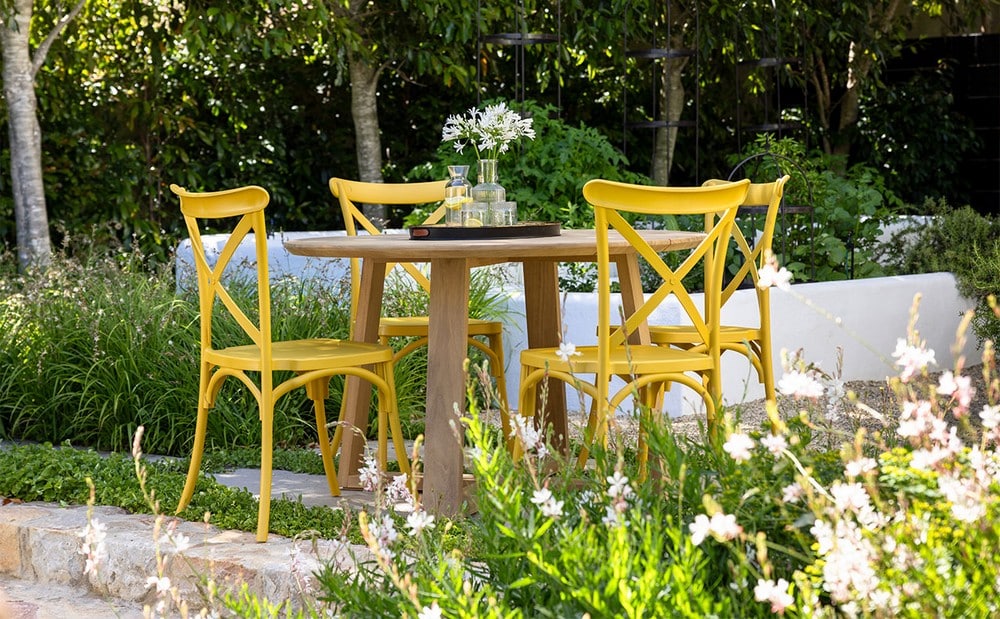
Solutions for Removing Stains and Dirt
Plastic, resin, and PVC furniture are popular choices for outdoor spaces due to their affordability, durability, and ease of maintenance. However, exposure to outdoor elements can cause dirt, stains, and mildew to accumulate on their surfaces. Here’s how to effectively clean them:
- Mild Cleaning Solutions: For regular cleaning, a solution of warm water and mild dish soap is usually sufficient. Use a sponge or soft cloth to scrub the furniture and remove dirt, grime, and stains. For plastic or resin furniture with intricate designs, a soft brush can help reach into crevices. Avoid using abrasive cleaning tools, as these can scratch the plastic surface.
- Tackling Tough Stains: For more stubborn stains, such as mildew or tree sap, mix a solution of 1/4 cup of baking soda with 1 gallon of warm water. Baking soda acts as a mild abrasive, helping to scrub away stains without damaging the plastic. Another option is to use a vinegar and water solution (1 part vinegar to 3 parts water) to naturally disinfect and remove mold or mildew.
- Avoid Harsh Chemicals: It’s important to steer clear of bleach or chlorine-based cleaners on colored plastic furniture, as these can cause discoloration. For white plastic, a diluted bleach solution may be used cautiously to remove severe stains, but it should be thoroughly rinsed off to prevent damage to the surface.
Protection Against Fading and Cracking
Over time, exposure to harsh sunlight can cause plastic furniture to fade and become brittle, leading to cracks. Taking preventive measures is key to maintaining its appearance and structural integrity.
- UV Protectants: To prevent fading, apply a UV protectant spray designed for plastic outdoor furniture. These sprays add a layer of protection against the sun’s rays, helping to keep the color vibrant and reducing the chances of cracking. Be sure to clean the furniture before applying the spray, and reapply periodically throughout the year.
- Polishing: For an added shine and to enhance protection, you can also apply a plastic restorer or car wax to clean, dry plastic furniture. These products create a barrier against the elements and help the furniture resist water, stains, and UV damage.
Proper Winter Storage
While plastic, resin, and PVC furniture are generally weather-resistant, winter conditions such as freezing temperatures, snow, and heavy rain can weaken these materials over time. Proper storage during the colder months is essential to prolonging the life of your furniture.
- Indoor Storage: The best way to protect plastic furniture in the winter is to store it indoors, such as in a garage, shed, or basement. This shields the furniture from temperature fluctuations, moisture buildup, and heavy snow or ice.
- Outdoor Storage: If indoor storage is not an option, invest in high-quality, breathable, and waterproof furniture covers. These covers will help protect the furniture from moisture while allowing airflow to prevent condensation, which could lead to mold or mildew. Ensure the furniture is placed on a dry surface, elevated off the ground if possible, to avoid direct contact with wet soil or snow, which can accelerate cracking due to temperature changes.
By following these cleaning and maintenance steps, your plastic, resin, or PVC furniture will stay looking new and functional for many years. Regular cleaning, protection from UV rays, and proper storage will ensure that the furniture withstands outdoor conditions while maintaining its appearance and durability.
Caring for Outdoor Cushions and Upholstery
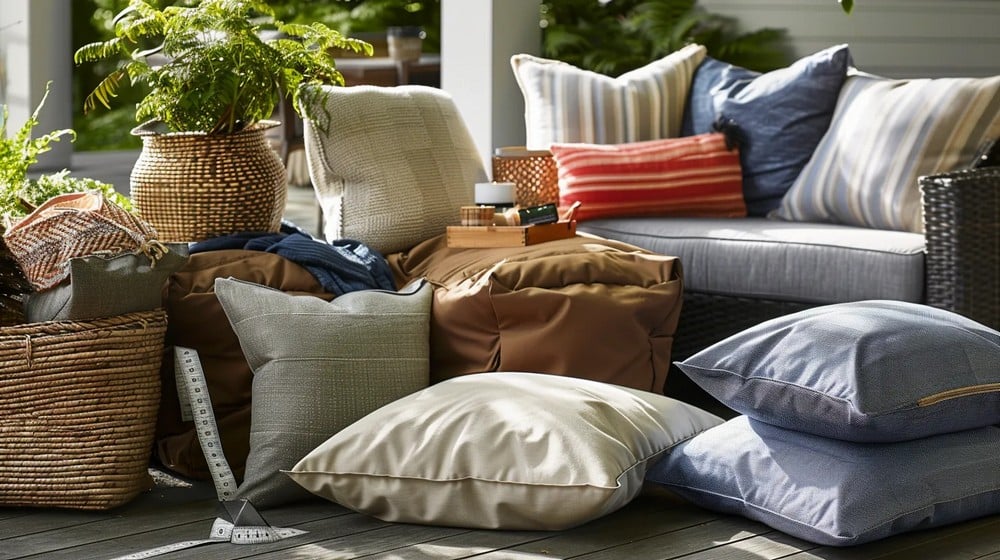
Cleaning Removable and Non-Removable Cushions
Outdoor cushions are usually made from durable, weather-resistant fabrics, but they still require regular cleaning to maintain their appearance and longevity. Depending on whether the covers are removable or not, the cleaning process can vary.
Removable Cushions: If your outdoor cushion covers have zippers or Velcro closures, they can be removed and washed separately. Always check the manufacturer’s care instructions first, but most removable covers can be machine-washed using a gentle cycle with mild detergent. To prevent shrinkage, allow the covers to air dry instead of using a dryer. If the cushions are particularly dirty, you can pre-treat stains by applying a mixture of water and mild detergent directly to the affected areas before washing.
Non-Removable Cushions: For cushions with non-removable covers, the cleaning process must be done by hand. Mix warm water with mild detergent or dish soap in a bucket. Use a soft-bristle brush or sponge to scrub the fabric, paying extra attention to seams and crevices where dirt tends to accumulate. After scrubbing, rinse thoroughly with clean water to remove any soap residue. To speed up the drying process, squeeze out as much water as possible and stand the cushions on their sides in a well-ventilated area or in direct sunlight.
Removing Mold and Stubborn Stains
Mold and mildew can develop on outdoor cushions, especially if they are exposed to moisture for extended periods. Stains from spills, bird droppings, or tree sap can also be difficult to remove. Here are some effective methods for tackling these issues:
- Mold and Mildew Removal: For mold and mildew, a solution of water and white vinegar is effective. Mix one part white vinegar with three parts water and apply it to the affected areas using a spray bottle. Let the solution sit for about 10-15 minutes, then scrub gently with a soft brush. Rinse the cushions with clean water and allow them to air dry completely. For more persistent mildew, you can use a solution of one cup of bleach, ¼ cup of mild detergent, and a gallon of water. However, test this on a small, inconspicuous area first to ensure it doesn’t damage the fabric.
- Stubborn Stains: To remove stubborn stains like oil or food spills, create a paste of baking soda and water, and gently scrub it into the fabric. Let the paste sit for a few minutes before rinsing with water. Another method is using a mild soap and water solution, applied with a sponge or soft cloth. For deeper stains, you may need to repeat the process or use a fabric-specific stain remover.
Proper Storage of Cushions During the Off-Season
To prolong the life of your outdoor cushions, proper storage during the colder months is essential. Exposure to harsh winter conditions like snow, ice, and constant moisture can lead to mold growth, fading, and degradation of the fabric.
- Indoor Storage: The best way to protect outdoor cushions during the off-season is to store them indoors. A dry and ventilated area such as a garage, attic, or basement is ideal. Before storing, ensure the cushions are completely dry to prevent mold and mildew growth during storage.
- Outdoor Storage: If indoor storage is not possible, use weather-resistant storage containers or cushion bags to keep your cushions safe from moisture. Choose containers that are waterproof but breathable to prevent condensation buildup. Alternatively, storing cushions under a covered area like a patio roof or gazebo can help shield them from rain and snow. As a last resort, you can stack cushions off the ground and cover them with waterproof furniture covers, ensuring there’s enough airflow to prevent mildew formation.
By cleaning your outdoor cushions regularly, addressing mold and stains promptly, and storing them properly during the off-season, you can maintain their appearance and ensure they remain comfortable and fresh year after year.
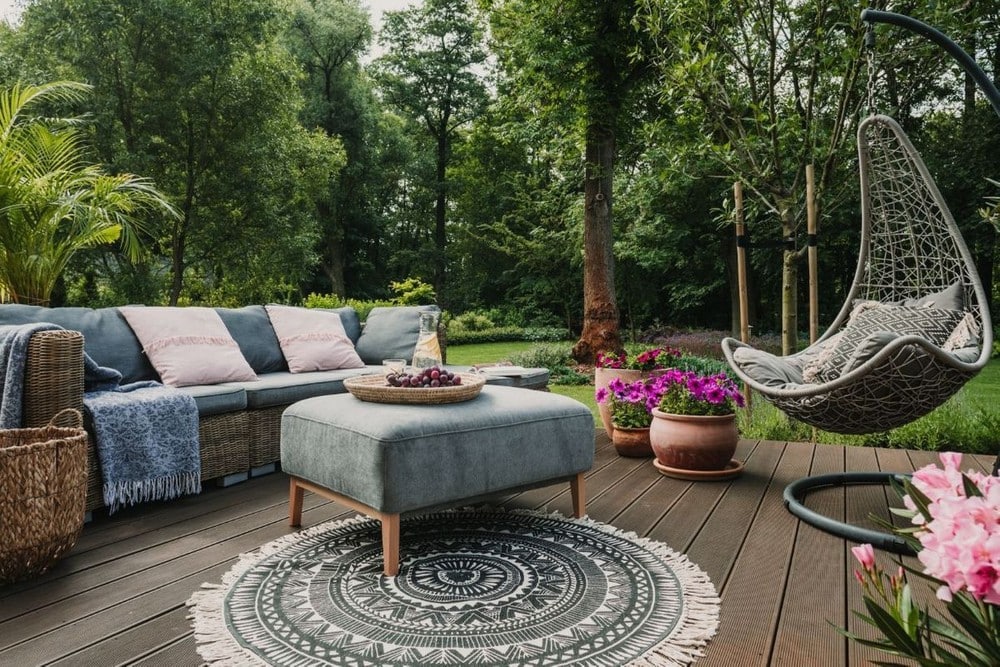
Periodic Maintenance of Outdoor Furniture
Regular maintenance of outdoor furniture is essential for preserving its durability, appearance, and functionality over time. While each material type has its specific cleaning and care requirements, a consistent schedule of seasonal upkeep ensures your furniture stays in good condition throughout the year. Below are the key aspects of periodic maintenance.
Recommended Frequency for Seasonal Cleanings
The frequency of cleaning outdoor furniture largely depends on how often it is used and the climate in which it is kept. However, as a general rule of thumb, you should clean your furniture at least twice a year—at the start of the outdoor season (spring) and at the end (fall), before storing it for winter.
- Spring Cleaning: At the beginning of the warm season, give your furniture a thorough cleaning to remove the dirt, dust, and mildew that may have accumulated over the winter. This is also a good time to inspect each piece for signs of wear, such as rust on metal furniture, mildew on cushions, or cracks in wood.
- Mid-Season Touch-Up: Depending on use, an additional mid-summer cleaning may be necessary to remove food stains, bird droppings, or pollen that have accumulated from frequent outdoor gatherings.
- Fall Cleaning: At the end of the season, before putting your furniture into storage, perform a deep cleaning to ensure it is free from grime or moisture that could lead to damage during the winter months. This is especially important for wooden and metal furniture, which are more susceptible to mold, rust, or cracking if left dirty or damp.
Applying Protective Products for Each Material
Each type of outdoor furniture material requires specific treatments to maintain its integrity. Regularly applying protective products helps prolong the life of your furniture, keeping it looking new and functional despite exposure to the elements.
- Wood: Wooden furniture benefits from a yearly application of oil, such as teak oil or linseed oil, which replenishes the wood’s natural oils and prevents it from drying out and cracking. Additionally, applying a clear wood sealant or varnish can protect the surface from moisture and UV rays, preserving the natural color of the wood.
- Metal: Metal furniture, especially iron or steel, should be treated with a rust inhibitor or a thin coat of car wax at least once a year to prevent oxidation. Aluminum furniture is less prone to rust but can still benefit from a protective spray or wax to maintain its finish.
- Rattan and Wicker: For natural rattan, applying a clear lacquer or varnish once a year helps protect the delicate fibers from moisture and sun damage. Synthetic rattan does not need the same type of treatment, but applying a UV protectant spray can help preserve its color.
- Plastic, Resin, and PVC: These materials can fade or crack under constant exposure to the sun. Applying a UV-protective spray periodically helps protect the surface and extend the furniture’s lifespan. A plastic restorer can also be used to add shine and prevent brittleness.
Preparing Furniture for Off-Season Storage
Proper storage during the off-season is vital for keeping your outdoor furniture in top condition. Whether you’re dealing with harsh winters or rainy seasons, the goal is to protect your furniture from moisture, freezing temperatures, and direct exposure to the elements.
- Clean Before Storing: Before storing any furniture, make sure it is thoroughly cleaned and completely dry. Dirt and moisture left on surfaces can cause mold, mildew, or rust to develop during storage.
- Indoor Storage: If possible, store your outdoor furniture indoors, such as in a garage, basement, or shed. This offers the best protection against the elements. Cushions and fabric-covered items should always be stored indoors to avoid moisture buildup, which can lead to mildew.
- Outdoor Storage: If indoor storage is not an option, use weather-resistant covers specifically designed for outdoor furniture. These covers should be breathable to prevent condensation but still offer protection from rain, snow, and UV rays. Ensure furniture is elevated off the ground to avoid direct contact with moisture, which could lead to rust or rot.
By following these seasonal maintenance steps—cleaning at the right times, applying protective products, and properly storing your furniture—you can significantly extend the life of your outdoor furniture and keep it looking as good as new for many years to come.
Conclusion
The Importance of Long-Term Care
Investing time and effort into the long-term care of your outdoor furniture is crucial for maintaining both its aesthetic appeal and structural integrity. Outdoor furniture is exposed to a variety of environmental factors—sun, rain, snow, humidity, and dirt—that can cause damage if not properly managed. Regular cleaning, applying protective treatments, and storing furniture correctly during off-seasons are essential practices to safeguard your investment. Consistent care not only keeps your outdoor space looking fresh and inviting, but also saves you money in the long run by extending the life of your furniture.
Proper maintenance prevents common issues like rust on metal, mold on cushions, fading on wooden or plastic furniture, and structural damage due to weather exposure. By taking simple preventive measures, you can enjoy your outdoor furniture for many years without the need for frequent repairs or replacements.
Final Tips for Extending the Life of Outdoor Furniture
Here are some final key tips to ensure your outdoor furniture remains in excellent condition over time:
- Routine Cleaning: Make cleaning a regular part of your furniture maintenance routine. Whether it’s a quick wipe-down after a heavy use or a deep clean at the start and end of the season, keeping your furniture free of dirt and grime helps preserve its longevity.
- Use Protective Covers: When not in use, covering your furniture with weather-resistant covers will prevent damage from moisture, UV rays, and debris. This is especially important for metal, wood, and wicker furniture, which are more vulnerable to the elements.
- Apply Sealants and Protectants: Regularly apply protective products like sealants, oils, waxes, and UV protectants that are specifically designed for the material of your furniture. These products act as barriers against environmental stressors, helping to maintain the appearance and strength of the materials.
- Store Furniture Properly: During the off-season, make sure to store furniture in a dry, covered area or use proper storage solutions. Cushions should always be brought indoors, while metal and wood pieces benefit from being stored in garages or sheds to avoid prolonged exposure to moisture and cold.
- Inspect Regularly: Perform regular inspections for any signs of damage, such as rust spots, cracks, mildew, or fading. Early detection allows you to address these issues before they worsen, ensuring that your furniture stays in prime condition.
By incorporating these tips into your routine and providing ongoing care, you can protect your outdoor furniture from weather-related wear and tear, ensuring that it remains a functional and attractive feature of your outdoor space for years to come.





